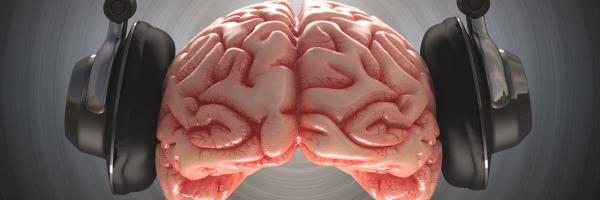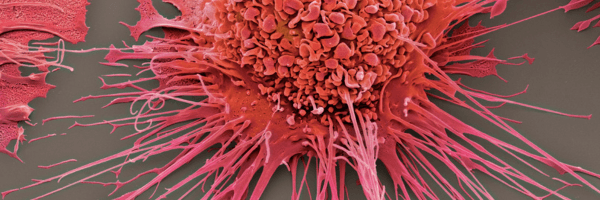Founder and Medical Director
 In private practice since 1994, Dr Rollins is Board Certified with the American Board of Family Practice and has been certified in Advanced Cardiac Life Support and Advanced Trauma Life Support. With these credentials and years of experience in a rural practice he is well qualified in managing complex medical issues as well as handling serious medical emergencies and injuries.
In private practice since 1994, Dr Rollins is Board Certified with the American Board of Family Practice and has been certified in Advanced Cardiac Life Support and Advanced Trauma Life Support. With these credentials and years of experience in a rural practice he is well qualified in managing complex medical issues as well as handling serious medical emergencies and injuries.
As the first physician in Western Colorado to be Board Certified with the American Board of Anti-Aging and Regenerative Medicine, Dr Rollins also has extensive training and experience with bioidentical hormone replacement for men and women, thyroid and adrenal disorders, fibromyalgia, chronic fatigue, weight loss and healthy aging.
In 2006 Dr. Rollins opened AdvantAge Integrative Medicine in Grand Junction in order to bring these specialty services to Western Colorado. In 2008 he founded the Integrative Medicine Center of Western Colorado.
Dr Rollins is an active educator with a passion for learning and teaching. He can be found doing weekly educational seminars, newspaper columns and television news commentary on local network affiliates. He is a clinical faculty member at the University of Colorado School of Medicine, hosting medical students for their one month long family medicine training.
In 2004 Dr. Rollins was chosen for “Colorado Family Physician of the Year.” This prestigious award is given annually to only one of over 1,800 family physicians. The recipient is chosen by the Board of the Colorado Chapter of the American Academy of Family Physicians and is based on their expertise and commitment to family medicine.
He is a member of the American College for the Advancement of Medicine (ACAM). Having passed the “gold standard” examination from ACAM, he is “Certified in Chelation Therapy“. Dr. Rollins has extensive background in Occupational Medicine, caring for work related injuries, and is certified as “preferred provider” with Pinnacol Assurance, Colorado’s largest workers’ compensation insurance company. He serves as a medical director for HopeWest Hospice in Plateau Valley and Debeque.
After graduating from the University of Kansas School Of Medicine, he then finished his residency training in Family Practice at St. Mary’s Hospital in Grand Junction. He opened his private practice in Collbran, Colo. in 1994 where he and his partner provide full service family practice care while providing 24 hr / day emergency coverage.
An avid health enthusiast himself Scott “walks the talk” spending his personal life enjoying time with his wife and two boys, cooking and eating healthy foods, working in his family’s organic garden, taking his ritual morning walk, hiking, skiing or just relaxing playing guitar and piano.
Latest Articles From Dr. Rollins
A Christmas Music Prescription
If laughter is the best medicine, then I’d like to think music is a close second. I discovered around the age of 18 that I have an ear for playing music, which is a blessing and a curse. I’m confessing that my love for music borders on problematic. Most days if I’m running behind I can blame it on the irresistible gravitational pull of that glorious black and white keyed beast that lives in our living room. Other times, the guitar is impugned. If the jazz bars would have me and I could pay the bills, I’m afraid medicine might become my hobby. Listening to music is equally appealing. Mozart helps the infant brain grow and the college student score higher in math. Whether it’s Beatles or Stones,…
Understanding the Ketogenic Diet
What Is the Ketogenic Diet? The ketogenic diet is a high-fat, moderate-protein, very low-carbohydrate nutrition strategy designed to shift the body’s metabolism away from glucose and toward fat as its primary fuel source. Although it has surged in popularity for weight loss and metabolic health, the ketogenic diet originated as a therapeutic intervention for epilepsy nearly a century ago. Today it is also used clinically for insulin resistance, type 2 diabetes, neurological disorders, cancer metabolic therapy and cognitive performance. Understanding how the diet works and how to measure ketosis accurately allows people to use it more safely and effectively. How Ketosis Works Under normal circumstances the body prefers glucose, from carbohydrates, for fuel. When there is plenty of glucose, insulin rises to allow glucose into cells for fuel. …
Why a Whole-Food Plant-Based Diet Makes Sense — Even According to Our Ancestors
A sweeping 2025 study titled “The Broad Spectrum Species: Plant Use and Processing as Deep Time Adaptations”, published in Journal of Archaeological Research, fundamentally re-examines what early humans ate, and in doing so, challenges the popular mythology behind the modern “paleo diet.” Rather than being strictly meat-eating hunters, our ancestors apparently relied heavily on a broad variety of plants and sophisticated methods to process them. We’re A “Broad-Spectrum” Species The authors (and their fossil / archaeobotanical evidence) argue we should think of humans not as specialized carnivores, but as a “broad-spectrum species”, meaning that our evolutionary success is rooted in flexibility and dietary diversity. Rather than not eating plant foods until agriculture arose, the record shows robust and consistent use of wild seeds, nuts, tubers and roots as…
The Hidden Power of Bone Stock
A Timeless Healing Food Returns We make lots of bone stock at our house. It’s super easy and extends our food budget considerably. The usual go-to stock is chicken. A small free range hen costs about $10 and provides several meals just with the meat. The night the bird is cooked the carcass is picked clean and tossed in the freezer for when we’re ready to make stock. The the real magic begins later when we produce 4 quarts of the liquid gold! Just this week we made some beef bone stock from the leftover prime rib bones ala Thanksgiving dinner. Bone stock is a culinary favorite in hour home, but has quietly re-emerged as a nutritional staple, as its roots stretch back thousands of years. Long before…
Harmonizing Your Brain – How Music May Be a Key to Cognitive Longevity
As someone who moves between the world of medicine and the world of music, I’ve long believed in the power of sound not just as something aesthetic, but as a therapeutic medium for body, brain and spirit. For me, playing the piano or guitar is a daily treat. Listening to music of all sorts is routine – rocking out while making dinner, listening to cool jazz on the drive to work, or spa music while meditating after lunch. Music can make the mood. A new study now offers robust evidence that engaging in music-related leisure activities isn’t merely pleasurable, it may meaningfully reduce the risk of dementia and support cognitive longevity. Music and Brain Health Study The 2025 study, “What Is the Association Between Music-Related Leisure Activities and…
Influenza Vaccine Pros, Cons & Natural Treatments
If you are weighing the pros and cons of getting the flu shot this year then you are not alone. Recent studies have questioned how well the flu vaccine really works. Here are some summary studies to help make an informed decision whether to get the jab, or not. And some natural treatments that offer quite a bit of relief should you get the flu. Making Sense of the Numbers Vaccine Effectiveness (VE) measures how well a vaccine works to prevent an infection, symptomatic illness, hospitalization, or death. It represents the reduction in risk of the targeted outcome among vaccinated individuals compared to unvaccinated individuals. For example, if 20% of unvaccinated people get sick while only 10% of vaccinated get sick, that is a 50% reduction in risk…
Cross-Reactive Antibodies and False-Positive Serology in Tick-Borne Disease Testing
Understanding Borrelia, Bartonella, and Babesia Beyond the Lab Report Serologic testing for tick-borne diseases is among the most challenging areas of infectious disease diagnostics. Patients frequently present with antibody positivity to multiple organisms, sometimes across completely different types of pathogens, raising concerns about coinfection, reinfection, or persistent disease. In practice, however, cross-reactive antibodies and immune-driven false positives are far more common than true multispecies infection. Understanding the immunology behind these results is essential to avoid misdiagnosis, overtreatment, and unnecessary patient anxiety. The Immunologic Basis of Cross-Reactivity Cross-reactive antibodies arise when the immune system produces antibodies that bind shared or structurally similar epitopes (immune targets) across different organisms. This phenomenon is especially pronounced in chronic infections and immune-activated states, where polyclonal B-cell activation leads to broad antibody production with…
T Cells – The Immune System’s Traffic Cops
If you think of your immune system as a city, T cells are the skilled responders, the detectives, firefighters, and paramedics who rush in when trouble appears. They identify threats like viruses or cancer cells, coordinate the rest of the immune force and when needed, take out the bad guys directly. But as with any busy city, you also need traffic cops to keep things from turning chaotic. That’s where regulatory T cells, or Tregs, come in. They don’t chase criminals; they prevent pileups – calming responses so your body doesn’t harm itself. What makes a T cell a T cell? Every T cell carries a special sensor on its surface called a T-cell receptor (TCR). Think of it as a lock designed to fit one very specific…
Colorful Berries for the Heart
If you want to lower your risk of high blood pressure or heart disease then add more color to your diet. Vibrant colored fruits and vegetables are the key ingredients to a heart healthy diet – especially black, blue, purple, and red. The Colors of Berries Blueberries, raspberries, strawberries, cherries, currants, cranberries, pomegranates and grapes top the list of heart healthy fruits. They get their color from a plant pigment called anthocyanin, which is part of the larger flavonoid family of plant derived products, which in turn is part of the larger polyphenol family of plant compounds. In general, the polyphenols help control inflammation and oxidation while improving blood sugar and cholesterol. As a result these tasty little fruits are especially good for the heart. Berries for the…
High Intensity Interval Training
If you don’t have time to exercise, then you had better make time to be sick, because so much of our health depends on getting the right amount and the right types of exercise. We all know it, but we get distracted with life, and guess what gets put off until tomorrow or someday when there is more time. Someday means never, and I’m going to give you a tip that can change today. There is a simple form of exercise that will save you hours and hours of time on the treadmill or bike. In as little as 22 minutes, three times per week, you can lose weight, lose body fat, increase muscle tone, increase energy and performance, and boost your sex drive while you’re at it.…
Are Food Allergies Making You Gain Weight?
If you struggle with losing weight despite eating well and exercising then consider investigating for delayed food allergies. Along with hormone imbalance and poor intestinal health we find the connection between food allergies and weight gain to be quite common. Our clinic tests lots of people each week and we routinely see patients losing 10 or 15 pounds in a few months simply by eliminating food allergens. Over the course of a year many patients will lose as much as 20-30 pounds. But “I don’t have food allergies”, you may say. Actually, most people probably do and just don’t know it. The reason is that we are talking about “delayed” versus “immediate” allergies. Many practitioners refer to these allergies as “sensitivities” or “intolerances” but in fact anything that…
Heavy Metals and Cardiovascular Health
When we think of cardiovascular risk factors, we typically focus on diet, exercise, and genetics. But lurking beneath the radar is a silent threat of toxic heavy metals, ubiquitous environmental pollutants increasingly linked to heart disease. A major 2024 review in Circulation Research shined a spotlight on the cardiovascular damage these metals cause and the urgent need for prevention and intervention strategies. Why Heavy Metals Matter Heavy metals such as lead, cadmium, mercury, arsenic, and chromium are present in our air, water, soil, food, and even consumer products. Once inside the body, they do more than just accumulate, they actively interfere with cardiovascular function. Research consistently shows that heavy metals provoke oxidative stress, spark inflammation, disrupt lipid metabolism, interfere with electrical signaling in the heart, and alter gene…
Why Am I So Tired – Could it be Adrenal Fatigue?
The body has a marvelous system for dealing with acute stress, allowing us to meet challenges and perform at a high level both physically and mentally. But, chronic stress, day in and day out without respite, leads to burnout and numerous health problems, especially fatigue. Learning how to recognize and deal with chronic stress or adrenal fatigue is one of most important keys to great health. The adrenal glands are located on top of the kidneys and when stressed they pump out the “fight-or-flight” hormones. If we had to march for days without food and water, it is the adrenal gland that would keep us going. Normally it comes into play during a time of stress, such as a mentally challenging time where we need extreme attention, in…
Managing Stress by Finding Your Nervous System’s Sweet Spot
Stress is rampant and it’s creating many health problems. Each day in the office I’m talking to patients about “dialing down” their stress response. We can’t avoid every stressful situation, but we do have some simple and powerful tools to minimize the impact stress has on our mental and physical well being. The key is to balance the two competing parts of our nervous system that have to do with stress – finding the nervous system “sweet spot”. Every moment of every day, your body’s internal command center, the autonomic nervous system, is working subconsciously behind the scenes. It’s made up of two main branches: the sympathetic nervous system (SNS), which drives the classic “fight or flight” response, and the parasympathetic nervous system (PNS), which governs “rest and…
Bath vs Sauna: Which Heat Therapy Packs the Biggest Punch?
I love our hot tub. Our son loves his dry sauna. And many of my patients love their infra-red sauna. Last week I wrote about the benefits of heat therapy related to the heat shock proteins. But I’ve always wondered, is one heat therapy better than another? I just got at least somewhat of an answer. A groundbreaking study published in AJP Regulatory, Integrative, and Comparative Physiology (June 2025) by Jessica Atencio and colleagues offers some clear answers. This study directly compared three popular forms of passive heat therapy – hot water immersion (HWI), traditional sauna (TRAD), and far-infrared sauna (FIR) – to see how each impacts body temperature, cardiovascular function, and immune system activity. The trial involved 20 healthy adults (10 men and 10 women, average age…
Heat vs. Cold Shock Proteins: A Battle of the Elements
Last week I was in Santa Fe enjoying a soak in a hot spring then alternating with a jump into icy cold water. Our friends were questioning the health benefits of both, and the sanity of the latter, and it got us talking shock proteins. In the quest for better health, sharper focus, faster recovery, and longer life, consider temperature stress as a simple, yet powerful therapy. Whether you’re soaking in a hot bath or plunging into an icy stream, your body responds by producing specialized molecules known as shock proteins. These include heat shock proteins (HSPs) and cold shock proteins (CSPs), your body’s internal repair and protection squads. While they operate in different ways, both are part of your body’s hormetic response – beneficial stress that makes…
















